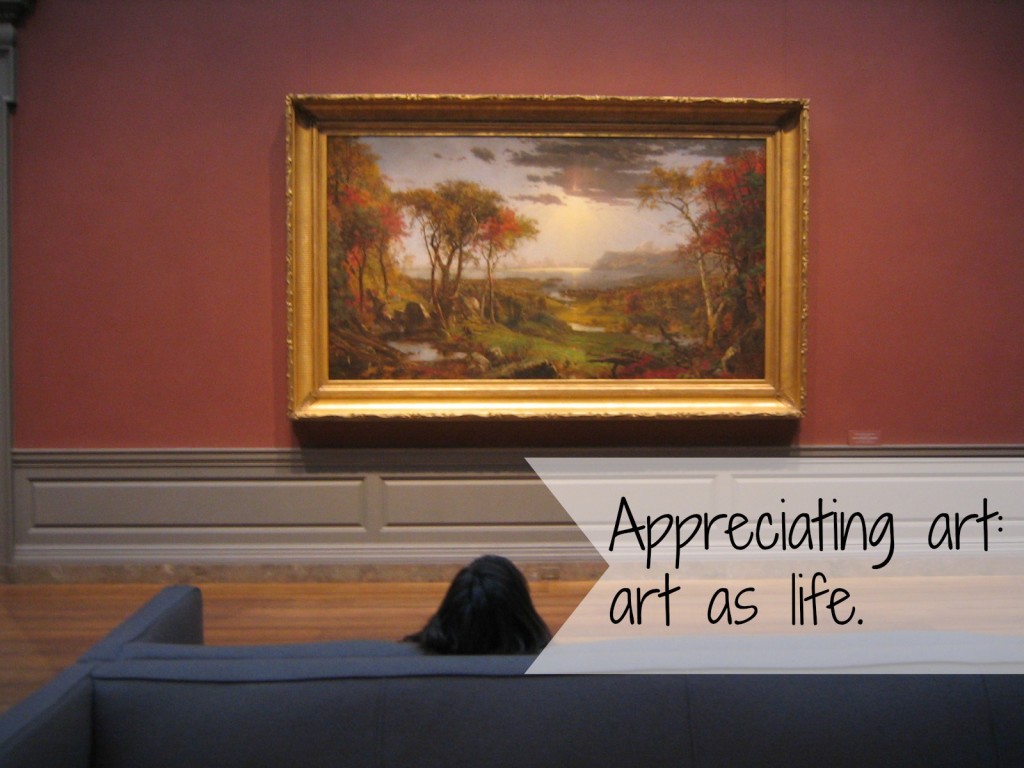Last weekend I visited the Winnipeg Art Gallery with the mother dear and Mr Science. It had been years since I last looked at the art there, so it was a lovely experience to wander the big rooms and appreciate the photographs, sculptures, paintings, and other forms of art that graced the walls.
Because it was one of the last days for the current display of Yousuf Karsh’s photography, the entire building was packed full of people. The three of us decided to move against the grain, going backwards through Karsh’s life rather than forwards. It was easier to move at our own pace. In hindsight, it also would have presented a unique view on the development of Karsh’s interests and skills as a photographer, if we had been paying attention especially to that.
The mother dear rushed ahead and was finished before Mr Science and I had strolled halfway along the gallery. Mr Science and I weren’t even reading the plaques on the walls; we were simply peering over people’s shoulders, admiring the art and interpreting it however we saw fit. We enjoyed guessing who the subjects of the photograph were before craning to see the names on the plaques beside them. We weren’t moving at a snail’s pace, but we were taking our time.
On the other hand, the mother dear was uninterested in looking at every single photograph with great detail. She preferred to go along and stop when a particular photograph caught her eye, or when she recognized the subject. When she arrived at the gallery showcasing Inuit art, she spent much more time reading each plaque and absorbing the beauty of the sculptures, because that was more appealing to her.
It seemed that the majority of the people attending the Karsh gallery were reading each plaque and taking a good long look at each photograph in the chronological order that they were represented. People barely moved, shuffling along every few minutes after they had analyzed the picture and the writing beside it.
There is no right or wrong way to view art, just as there is no right or wrong way to go through life. The way we see the world, the way we interact with the world, bears our own stamp. We mark it as we see fit and we will move at our own pace, looking for what intrigues us and passing by what we aren’t interested in.
In this way, we appreciate the good things, aren’t bogged down by what we deem is less important, and we take some meaning away from it relevant only to ourselves. It doesn’t matter the speed of our adventures: what matters is that we do learn something from it all.

I think an art history student might maintain that there IS a wrong way to view art. I don’t know what that would be, but I would assume that it would be something along the lines of ‘it is wrong to view art without making some effort to appreciate/learn about the subject or artist.’
Insert ‘life’ for ‘art’, and I believe it too. But if you have an interest in art, even however small, I figure you’re probably on a decently good road for life as well.
Westwood- True, an art history student might argue that. This is why I’m a rhetoric student 😉 I guess it all depends on perspective.